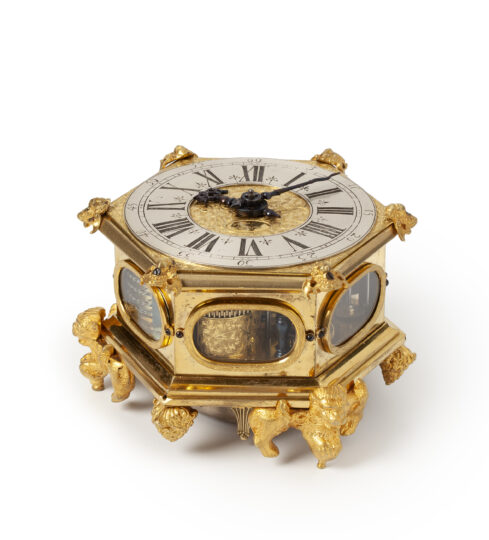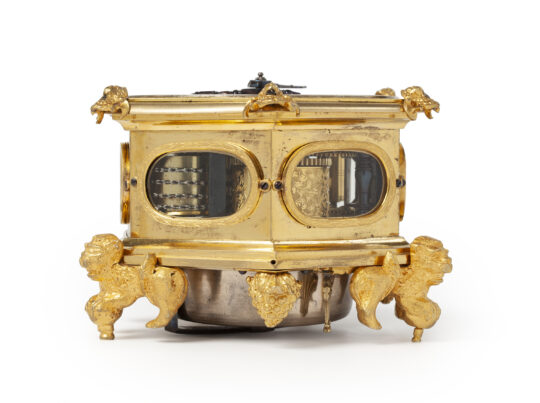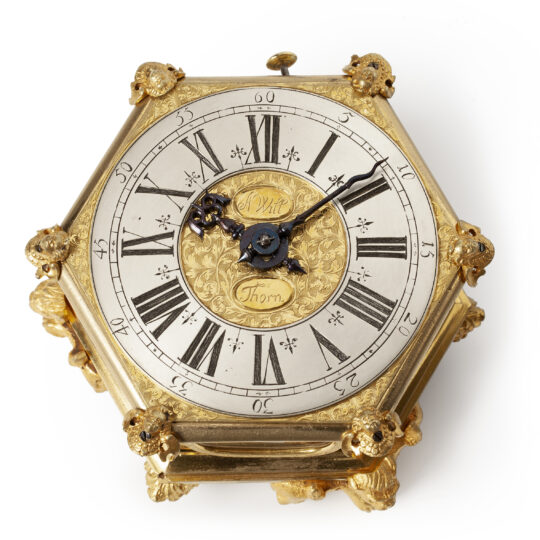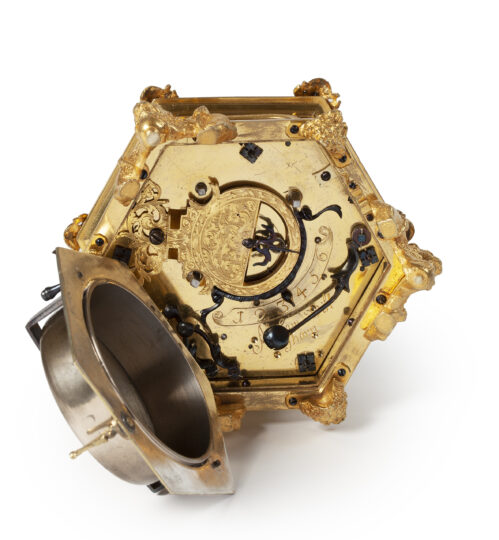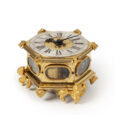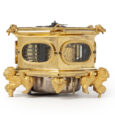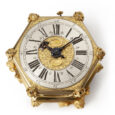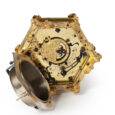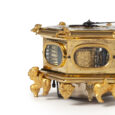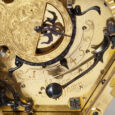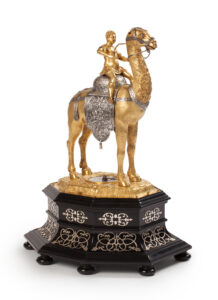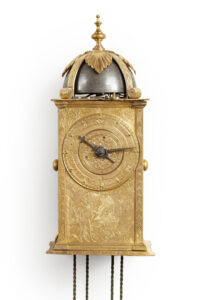Elegant Tischuhr hexagonal A. Will Thorn Ca. 1710
M&R205
TISCHUHR hexagonal
Signed: A. Will Thorn
Circa 1710
Germany
Movement
The spring-driven, day-going movement of this richly embellished hexagonal clock is constructed between brass plates. It consists of going and striking trains. The going train has a spring barrel, chain fusee and verge escapement with hairspring balance under an extremely elaborately pierced and engraved balance cock. The striking indicates the hours fully on a bell, mounted in the lid. In addition, it has push-quarter repeat, activated by a push button on the side near the I. The clock is wound from the back. The maker has signed the clock on the backplate A. Will Thorn.
Dial
The engraved gilt-brass dial has a silver Roman chapter ring with half-hour, quarter-hour, 7½-minute, Arabic five-minute and minute divisions. The time is indicated by a pair of blued-steel hands. In the engraved middle the signature is engraved in two ovals A. Will Thorn.
Case
The richly engraved fire gilt-brass hexagonal case of this clock has oval framed glass windows on all sides so that the movement is almost entirely visible. The six corners has small head ornaments. The movement can be accessed by opening the hexagonal lid in which the bell is mounted with a catch. The clock rests on three lion feet with bunches of grapes in between.
Duration: 24 hours
Height 6.5 cm
Width 8.5 cm
Literature
J. Abeler, Meister der Uhrmacherkunst, Wuppertal, 2010, p. 600
The maker
Abraham Will was a native of Wandersbeck in Denmark. In 1706 he became a citizen of Torún in Poland. Will is the maker of the two town hall clocks in Torún, which he created in 1728 and 1730. Many of Abraham Will’s table clocks are held by museums and private collections. He died in 1755.

